
Диплом ИМЭ, ССК / Диплом / diplom / Приложения / HANDBOOK_DOD-Systems-Engineering-Guide-2001-01
.pdfChapter 1 |
Introduction to Systems Engineering |
system product by showing how it is broken down into subsystems and components. The System Architecture identifies all the products (including enabling products) that are necessary to support the system and, by implication, the processes necessary for development, production/construction, deployment, operations, support, disposal, training, and verification.
Life Cycle Integration
Life cycle integration is achieved through integrated development—that is, concurrent consideration of all life cycle needs during the development process. DoD policy requires integrated development, called Integrated Product and Product Development (IPPD) in DoD, to be practiced at all levels in the acquisition chain of command as will be explained in the chapter on IPPD. Concurrent consideration of all life cycle needs can be greatly enhanced through the use of interdisciplinary teams. These teams are often referred to as Integrated Product Teams (IPTs).
The objective of an Integrated Product Team is to:
•Produce a design solution that satisfies initially defined requirements, and
•Communicate that design solution clearly, effectively, and in a timely manner.
Multi-functional, integrated teams:
•Place balanced emphasis on product and process development, and
•Require early involvement of all disciplines appropriate to the team task.
Design-level IPT members are chosen to meet the team objectives and generally have distinctive competence in:
•Technical management (systems engineering),
•Life cycle functional areas (eight primary functions),
•Technical specialty areas, such as safety, risk management, quality, etc., or
•When appropriate, business areas such as finance, cost/budget analysis, and contracting.
Life Cycle Functions
Life cycle functions are the characteristic actions associated with the system life cycle. As illustrated by Figure 1-4, they are development, production and construction, deployment (fielding), operation, support, disposal, training, and verification. These activities cover the “cradle to grave” life cycle process and are associated with major functional groups that provide essential support to the life cycle process. These key life cycle functions are commonly referred to as the eight primary functions of systems engineering.
The customers of the systems engineer perform the life-cycle functions. The system user’s needs are emphasized because their needs generate the requirement for the system, but it must be remembered that all of the life-cycle functional areas generate requirements for the systems engineering process once the user has established the basic need. Those that perform the primary functions also provide life-cycle representation in designlevel integrated teams.
Primary Function Definitions
Development includes the activities required to evolve the system from customer needs to product or process solutions.
Manufacturing/Production/Construction includes the fabrication of engineering test models and “brass boards,” low rate initial production, full-rate production of systems and end items, or the construction of large or unique systems or subsystems.
Deployment (Fielding) includes the activities necessary to initially deliver, transport, receive, process, assemble, install, checkout, train, operate, house, store, or field the system to achieve full operational capability.
7
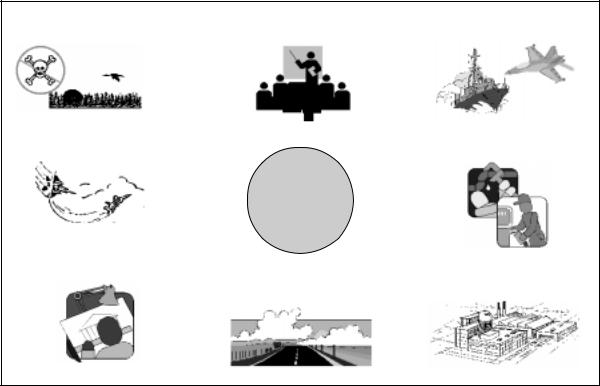
Systems Engineering Fundamentals |
Chapter 1 |
Disposal |
Training |
Verification |
Operation |
Support |
8 Primary
Life Cycle
Functions
Development |
|
Manufacturing/Production/ |
|
Deployment |
Construction |
|
|
Figure 1-4. Primary Life Cycle Functions
Operation is the user function and includes activities necessary to satisfy defined operational objectives and tasks in peacetime and wartime environments.
Support includes the activities necessary to provide operations support, maintenance, logistics, and material management.
Disposal includes the activities necessary to ensure that the disposal of decommissioned, destroyed, or irreparable system components meets all applicable regulations and directives.
Systems Engineering Considerations
Systems engineering is a standardized, disciplined management process for development of system solutions that provides a constant approach to system development in an environment of change and uncertainty. It also provides for simultaneous product and process development, as well as a common basis for communication.
Systems engineering ensures that the correct technical tasks get done during development through planning, tracking, and coordinating. Responsibilities of systems engineers include:
Training includes the activities necessary to achieve and maintain the knowledge and skill levels necessary to efficiently and effectively perform operations and support functions.
Verification includes the activities necessary to evaluate progress and effectiveness of evolving system products and processes, and to measure specification compliance.
•Development of a total system design solution that balances cost, schedule, performance, and risk,
•Development and tracking of technical information needed for decision making,
•Verification that technical solutions satisfy customer requirements,
8
Chapter 1 |
Introduction to Systems Engineering |
•Development of a system that can be produced economically and supported throughout the life cycle,
•Development and monitoring of internal and external interface compatibility of the system and subsystems using an open systems approach,
•Establishment of baselines and configuration control, and
•Proper focus and structure for system and major sub-system level design IPTs.
1.5 GUIDANCE
DoD 5000.2-R establishes two fundamental requirements for program management:
•It requires that an Integrated Product and Process approach be taken to design wherever practicable, and
•It requires that a disciplined systems engineering process be used to translate operational needs and/or requirements into a system solution.
Tailoring the Process
System engineering is applied during all acquisition and support phases for largeand small-scale systems, new developments or product improvements, and single and multiple procurements. The process must be tailored for different needs and/or requirements. Tailoring considerations include system size and complexity, level of system definition detail, scenarios and missions, constraints and requirements, technology base, major risk factors, and organizational best practices and strengths.
For example, systems engineering of software should follow the basic systems engineering approach as presented in this book. However, it must be tailored to accommodate the software development environment, and the unique progress
tracking and verification problems software development entails. In a like manner, all technology domains are expected to bring their own unique needs to the process.
This book provides a conceptual-level description of systems engineering management. The specific techniques, nomenclature, and recommended methods are not meant to be prescriptive. Technical managers must tailor their systems engineering planning to meet their particular requirements and constraints, environment, technical domain, and schedule/budget situation.
However, the basic time-proven concepts inherent in the systems engineering approach must be retained to provide continuity and control. For complex system designs, a full and documented understanding of what the system must do should precede development of component performance descriptions, which should precede component detail descriptions. Though some parts of the system may be dictated as a constraint or interface, in general, solving the design problem should start with analyzing the requirements and determining what the system has to do before physical alternatives are chosen. Configurations must be controlled and risk must be managed.
Tailoring of this process has to be done carefully to avoid the introduction of substantial unseen risk and uncertainty. Without the control, coordination, and traceability of systems engineering, an environment of uncertainty results which will lead to surprises. Experience has shown that these surprises almost invariably lead to significant impacts to cost and schedule. Tailored processes that reflect the general conceptual approach of this book have been developed and adopted by professional societies, academia, industry associations, government agencies, and major companies.
1.6 SUMMARY POINTS
•Systems engineering management is a multifunctional process that integrates life cycle functions, the systems engineering problemsolving process, and progressive baselining.
9
Systems Engineering Fundamentals |
Chapter 1 |
•The systems engineering process is a prob- lem-solving process that drives the balanced development of system products and processes.
•Integrated Product Teams should apply the systems engineering process to develop a life cycle balanced-design solution.
•The systems engineering process is applied to each level of development, one level at a time.
•Fundamental systems engineering activities are Requirements Analysis, Functional Analysis/ Allocation, and Design Synthesis, all of which are balanced by System Analysis and Control.
•Baseline phasing provides for an increasing level of descriptive detail of the products and processes with each application of the systems engineering process.
•Baselining in a nut shell is a concept description that leads to a system definition which, in turn, leads to component definitions, and then to component designs, which finally lead to a product.
•The output of each application of the systems engineering process is a major input to the next process application.
10
Chapter 2 |
Systems Engineering Management in DoD Acquisition |
CHAPTER 2
SYSTEMS ENGINEERING
MANAGEMENT IN
DOD ACQUISITION
2.1 INTRODUCTION
The DoD acquisition process has its foundation in federal policy and public law. The development, acquisition, and operation of military systems is governed by a multitude of public laws, formal DoD directives, instructions and manuals, numerous Service and Component regulations, and many inter-service and international agreements.
Managing the development and fielding of military systems requires three basic activities: technical management, business management, and contract management. As described in this book, systems engineering management is the technical management component of DoD acquisition management.
The acquisition process runs parallel to the requirements generation process and the budgeting process (Planning, Programming, and Budgeting System.) User requirements tend to be event driven by threat. The budgeting process is date driven by constraints of the Congressional calendar. Systems Engineering Management bridges these processes and must resolve the dichotomy of event driven needs, event driven technology development, and a calendar driven budget.
Direction and Guidance
The Office of Management and Budget (OMB) provides top-level guidance for planning, budgeting, and acquisition in OMB Circular A-11, Part 3, and the Supplemental Capital Programming Guide: Planning, Budgeting, and Acquisition of Capital Assets, July 1997. These documents
establish the broad responsibilities and ground rules to be followed in funding and acquiring major assets. The departments of the executive branch of government are then expected to draft their own guidance consistent with the guidelines established. The principal guidance for defense system acquisitions is the DoD 5000 series of directives and regulations. These documents reflect the actions required of DoD acquisition managers to:
•Translate operational needs into stable, affordable programs,
•Acquire quality products, and
•Organize for efficiency and effectiveness.
2.2 RECENT CHANGES
The DoD 5000 series documents were revised in 2000 to make the process more flexible, enabling the delivery of advanced technology to warfighters more rapidly and at reduced total ownership cost. The new process encourages multiple entry points, depending on the maturity of the fundamental technologies involved, and the use of evolutionary methods to define and develop systems. This encourages a tailored approach to acquisition and engineering management, but it does not alter the basic logic of the underlying systems engineering process.
2.3 ACQUISITION LIFE CYCLE
The revised acquisition process for major defense systems is shown in Figure 2-1. The process is
11
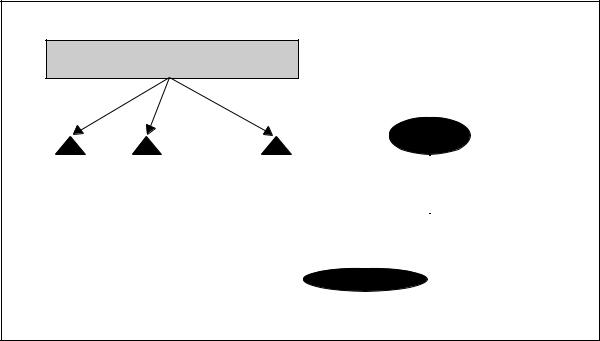
Systems Engineering Fundamentals |
Chapter 2 |
• Process entry at Milestones A, B, or C (or within phases)
Milestones
• Program outyear funding when it makes sense, but no later than Milestone B
|
|
|
|
Single Step or |
|
|
|
|
Evolution |
A |
B |
C |
IOC |
to Full Capacity |
|
Concept and |
|
System |
Production |
Sustainment |
|
|
Technology |
|
Development and |
and |
and |
|
|
Development |
|
Demonstration |
Deployment |
Disposal |
|
|
|
|
|
|
|
|
|
Pre-Systems |
|
Systems Acquisition |
Sustainment |
||
|
Acquisition |
|
(Engineering Development, Demonstration, |
and |
||
|
|
|
LRIP and Production) |
Maintenance |
||
|
MNS |
|
ORD |
All validated by JROC |
|
|
|
|
|
|
|
||
|
|
|
|
|
|
|
Relationship to Requirements Process
Figure 2-1. Revised DoD 5000 Acquisition Process
defined by a series of phases during which technology is defined and matured into viable concepts, which are subsequently developed and readied for production, after which the systems produced are supported in the field.
The process allows for a given system to enter the process at any of the development phases. For example, a system using unproven technology would enter at the beginning stages of the process and would proceed through a lengthy period of technology maturation, while a system based on mature and proven technologies might enter directly into engineering development or, conceivably, even production. The process itself (Figure 2-1) includes four phases of development. The first, Concept and Technology Development, is intended to explore alternative concepts based on assessments of operational needs, technology readiness, risk, and affordability. Entry into this phase does not imply that DoD has committed to a new acquisition program; rather, it is the initiation of a process to determine whether or not a need (typically described in a Mission Need Statement (MNS)) can be met at reasonable levels of technical risk and at affordable costs. The decision to enter into
the Concept and Technology Development phase is made formally at the Milestone A forum.
The Concept and Technology Development phase begins with concept exploration. During this stage, concept studies are undertaken to define alternative concepts and to provide information about capability and risk that would permit an objective comparison of competing concepts. A decision review is held after completion of the concept exploration activities. The purpose of this review is to determine whether further technology development is required, or whether the system is ready to enter into system acquisition. If the key technologies involved are reasonably mature and have already been demonstrated, the Milestone Decision Authority (MDA) may agree to allow the system to proceed into system acquisition; if not, the system may be directed into a component advanced development stage. (See Supplement A to this chapter for a definition of Technology Readiness levels.) During this stage, system architecture definition will continue and key technologies will be demonstrated in order to ensure that technical and cost risks are understood and are at acceptable levels prior to entering acquisition. In any event, the
12
Chapter 2 |
Systems Engineering Management in DoD Acquisition |
Concept and Technology Development phase ends with a defined system architecture supported by technologies that are at acceptable levels of maturity to justify entry into system acquisition.
Formal system acquisition begins with a Milestone B decision. The decision is based on an integrated assessment of technology maturity, user requirements, and funding. A successful Milestone B is followed by the System Development and Demonstration phase. This phase could be entered directly as a result of a technological opportunity and urgent user need, as well as having come through concept and technology development. The System Development and Demonstration phase consists of two stages of development, system integration and system demonstration. Depending upon the maturity level of the system, it could enter at either stage, or the stages could be combined. This is the phase during which the technologies, components and subsystems defined earlier are first integrated at the system level, and then demonstrated and tested. If the system has never been integrated into a complete system, it will enter this phase at the system integration stage. When subsystems have been integrated, prototypes demonstrated, and risks are considered acceptable, the program will normally enter the system demonstration stage following an interim review by the MDA to ensure readiness. The system demonstration stage is intended to demonstrate that the system has operational utility consistent with the operational requirements. Engineering demonstration models are developed and system level development testing and operational assessments are performed to ensure that the system performs as required. These demonstrations are to be conducted in environments that represent the eventual operational environments intended. Once a system has been demonstrated in an operationally relevant environment, it may enter the Production and Deployment phase.
The Production and Deployment phase consists of two stages: production readiness and low rate initial production (LRIP), and rate production and deployment. The decision forum for entry into this phase is the Milestone C event. Again, the fundamental issue as to where a program enters
the process is a function of technology maturity, so the possibility exists that a system could enter directly into this phase if it were sufficiently mature, for example, a commercial product to be produced for defense applications. However the entry is made—directly or through the maturation process described, the production readiness and LRIP stage is where initial operational test, live fire test, and low rate initial production are conducted. Upon completion of the LRIP stage and following a favorable Beyond LRIP test report, the system enters the rate production and deployment stage during which the item is produced and deployed to the user. As the system is produced and deployed, the final phase, Sustainment and Disposal, begins.
The last, and longest, phase is the Sustainment and Disposal phase of the program. During this phase all necessary activities are accomplished to maintain and sustain the system in the field in the most cost-effective manner possible. The scope of activities is broad and includes everything from maintenance and supply to safety, health, and environmental management. This period may also include transition from contractor to organic support, if appropriate. During this phase, modifications and product improvements are usually implemented to update and maintain the required levels of operational capability as technologies and threat systems evolve. At the end of the system service life it is disposed of in accordance with applicable classified and environmental laws, regulations, and directives. Disposal activities also include recycling, material recovery, salvage of reutilization, and disposal of by-products from development and production.
The key to this model of the acquisition process is that programs have the flexibility to enter at any of the first three phases described. The decision as to where the program should enter the process is primarily a function of user needs and technology maturity. The MDA makes the decision for the program in question. Program managers are encouraged to work with their users to develop evolutionary acquisition strategies that will permit deliveries of usable capabilities in as short a timeframe as possible, with improvements and enhancements added as needed through continuing
13
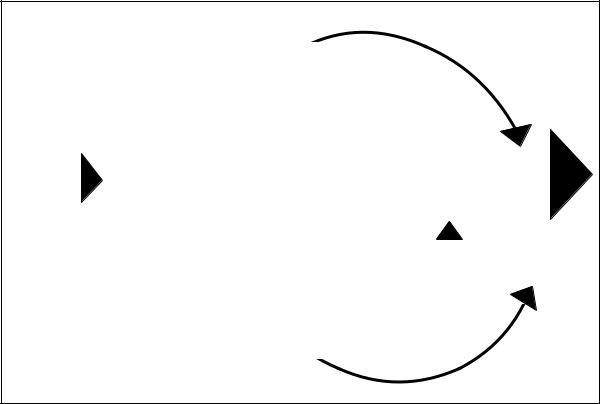
Systems Engineering Fundamentals |
Chapter 2 |
definition of requirements and development activities to support the evolving needs.
2.4SYSTEMS ENGINEERING IN ACQUISITION
As required by DoD 5000.2-R, the systems engineering process shall:
1.Transform operational needs and requirements into an integrated system design solution through concurrent consideration of all lifecycle needs (i.e., development, manufacturing, test and evaluation, verification, deployment, operations, support, training and disposal).
2.Ensure the compatibility, interoperability and integration of all functional and physical interfaces and ensure that system definition and design reflect the requirements for all system elements: hardware, software, facilities, people, and data; and
3.Characterize and manage technical risks.
4.Apply scientific and engineering principles to identify security vulnerabilities and to minimize or contain associated information assurance and force protection risks.
These objectives are accomplished with use of the management concepts and techniques described in the chapters which follow in this book. The application of systems engineering management coincides with acquisition phasing. In order to support milestone decisions, major technical reviews are conducted to evaluate system design maturity.
Concept and Technology Development
The Concept and Technology Development phase consists of two pre-acquisition stages of development. The first, Concept Exploration, is represented in Figure 2-2. The exploration of concepts is usually accomplished through multiple shortterm studies. Development of these studies is
|
|
|
|
Analysis of Alternatives |
|
|
|
|
|
|
|
|
Operational Analysis |
|
|
|
|
|
|
|
|
R&D Activities |
|
|
|
|
|
MNS |
|
Technology Opportunity |
|
|
|
|
|
|
|
|
|
|
|
|
|
|
|
|
|
|
|
|
|
|
|
|
|
|
|
Assessments and Analysis |
|
ORD Development |
|
|
|
|
|
|
|
|
|||
|
|
|
|
|
|
|
||
|
|
|
|
|
|
Preferred Concepts |
|
|
|
Technology |
|
Market Research |
|
|
|
|
|
|
|
|
|
|
|
|
||
|
Opportunity |
|
Business Process |
|
|
|
|
|
Assessments |
|
Reengineering |
Technical Review |
Decision |
||||
|
|
|
|
|
||||
|
|
|
|
System Engineering Process |
|
|
Review |
|
|
|
|
|
(System Architecting) |
|
|
|
|
|
|
|
|
|
|
|
|
|
|
• |
Alternative Concepts Defined |
MS A |
• |
Key Requirements Defined |
• |
Key Cost, Schedule, Performance |
|
|
|
Objectives Established |
Figure 2-2. Concept and Technology Development (Concept Exploration Stage)
14
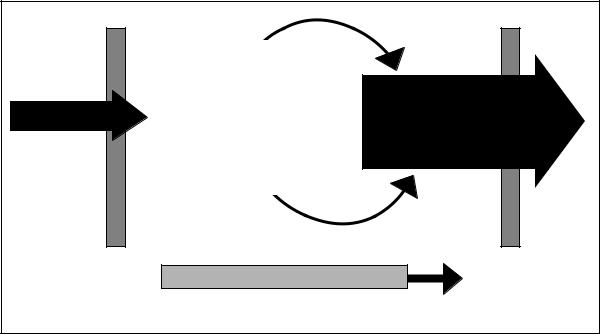
Chapter 2 |
Systems Engineering Management in DoD Acquisition |
expected to employ various techniques including the systems engineering process that translates inputs into viable concept architectures whose functionality can be traced to the requirements. In addition, market surveys, Business Process Reengineering activities, operational analysis, and trade studies support the process.
The primary inputs to these activities include requirements, in form of the MNS, assessments of technology opportunities and status, and the outputs from any efforts undertaken to explore potential solutions. When the contractor studies are complete, a specific concept to be pursued is selected based on a integrated assessment of technical performance; technical, schedule and cost risk; as well as other relevant factors. A decision review is then held to evaluate the concept recommended and the state of technology upon which the concept depends. The MDA then makes a decision as to whether the concept development work needs to be extended or redirected, or whether the technology maturity is such that the program can proceed directly to either Mile-stone B (System Development and Demonstration) or Milestone C (Production and Deployment).
If the details of the concept require definition, i.e., the system has yet to be designed and demonstrated previously, or the system appears to be based on technologies that hold significant risk, then it is likely that the system will proceed to the second stage of the Concept and Technology Development phase. This stage, Component Advanced Development, is represented in Figure 2-3. This is also a pre-acquisition stage of development and is usually characterized by extensive involvement of the DoD Science and Technology (S&T) community. The fundamental objectives of this stage of development are to define a systemlevel architecture and to accomplish risk-reduction activities as required to establish confidence that the building blocks of the system are sufficiently well-defined, tested and demonstrated to provide confidence that, when integrated into higher level assemblies and subsystems, they will perform reliably.
Development of a system-level architecture entails continuing refinement of system level requirements based on comparative analyses of the system concepts under consideration. It also requires that consideration be given to the role that the system
|
Continued Concept Exploration |
|
|
Activities As Appropriate |
|
|
|
System Architecture |
Concept |
Advanced Concept Technology |
Developed |
|
||
|
Demonstration |
Component Technology |
|
|
|
|
|
Demonstrated |
|
Systems Engineering Process |
|
|
(System Architecture Developed) |
|
Decision |
ORD Development |
MS B |
Review |
|
|
Figure 2-3. Concept and Technology Development
(Component Advanced Development Stage)
15
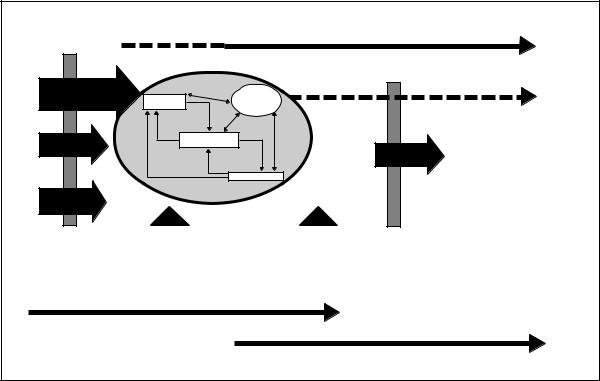
Systems Engineering Fundamentals |
Chapter 2 |
will play in the system of systems of which it will be a part. System level interfaces must be established. Communications and interoperability requirements must be established, data flows defined, and operational concepts refined. Top level planning should also address the strategies that will be employed to maintain the supportability and affordability of the system over its life cycle including the use of common interface standards and open systems architectures. Important design requirements such as interoperability, open systems, and the use of commercial components should also be addressed during this stage of the program.
Risk reduction activities such as modeling and simulation, component testing, bench testing, and man-in-the-loop testing are emphasized as decisions are made regarding the various technologies that must be integrated to form the system. The primary focus at this stage is to ensure that the key technologies that represent the system components (assemblies and sub-systems) are well understood
and are mature enough to justify their use in a system design and development effort. The next stage of the life cycle involves engineering development, so research and development (R&D) activities conducted within the science and technology appropriations should be completed during this stage.
System Development and Demonstration
The decision forum for entry into the System Development and Demonstration (SD&D) phase is the Milestone B event. Entry into this phase represents program initiation, the formal beginning of a system acquisition effort. This is the government commitment to pursue the program. Entry requires mature technology, validated requirements, and funding. At this point, the program requirement must be defined by an Operational Requirements Document (ORD). This phase consists of two primary stages, system integration (Figure 2-4) and system demonstration (Figure 2-5).
|
|
Approved Functional Baseline |
|
|
|
Draft Allocated Baseline |
|
System Level |
|
|
|
Architecture |
Requirements |
System Analysis |
|
and Control |
|
||
Analysis |
|
||
|
(Balance) |
|
|
|
|
|
|
|
Requirements |
|
|
|
Loop |
|
|
ORD |
Functional Analysis |
Preliminary and |
|
and Allocation |
|||
|
|
||
|
|
Design |
Detail Design |
|
|
Loop |
|
|
|
Efforts |
|
|
Verification |
|
|
|
|
Design Synthesis |
|
|
|
|
|
Previous |
|
|
|
Phase |
|
|
|
MS B |
Requirements |
Tech |
IPR |
Review |
Review |
||
|
|
Prototype |
|
|
Demonstration |
|
|
|
System Definition Effort |
|
|
|
|
|
Preliminary Design Effort |
Figure 2-4. System Development and Demonstration
(System Integration Stage)
16
